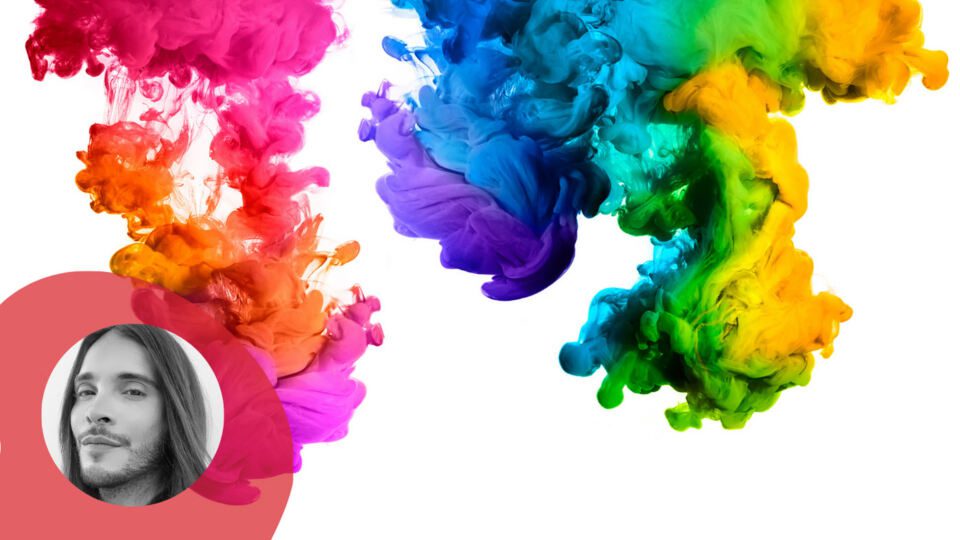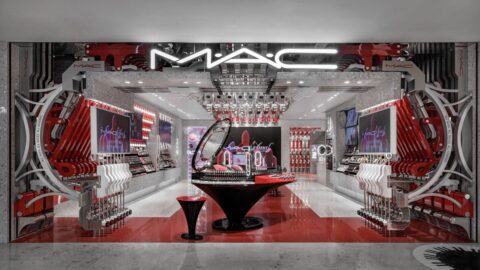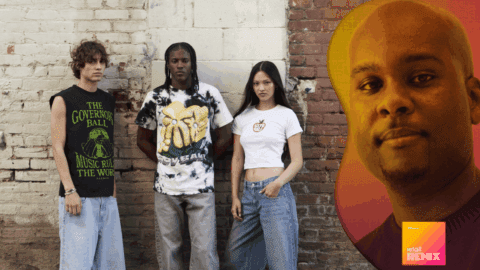Color isn’t what we think it is. The idea that many designers believe colors such as green or blue are able to evoke some sort of hyper-specific emotion in any given retail environment is shocking. Using a hybrid lens in both sensory design and neuroscience, designers may unlearn, reequip and apply color science insights that lead to measurable behavioral outcomes.
There have been myriad attempts to classify how people react to different individual colors. But color is too dependent on personal experiences to be universally translated into specific feelings. Research shows that personal preferences, experiences, upbringings, cultural differences and context all play a contributing role in our brains’ interpretation of color.
The Complexity of Color
Most of the information designers use to make decisions surrounding colors is flawed due to misinformation and watered-down science from market research or communications from trend offices. Color science is complex and involves much more than color psychology — the marketing study of how colors affect perceptions and behaviors.
Today, our scientific understanding of color perception is rooted in neuroscience and biology. Color consists of the re-transmission of visible energy that’s not absorbed by an object. It is the relationship between light and darkness. According to Professor Stephen Westland, one of the leading color scientists in the world, color is a computation that our brains make that enables us to extract meaning from the world. The perception of color is formed in our brain by the superposition of the neural signals from different kinds of photoreceptors found in our eye.
Some aspects of color can already be measured precisely. At Westland’s Color Science and Technology Lab at University of Leeds, they can calculate the wavelength of light and luminance, or brightness, of a color. But once you bring human perception into the mix, things get a little more complicated.
Perception or Reality?
People perceive color by factoring in numerous variables, like the quality of the light or the other tones bordering the color. Sometimes that means the brain will perceive the same object as two completely different colors.
Perceiving and being physically exposed to colors (via natural or artificial light) generates the same electrical impulses and magnetic currents that activate the biochemical and hormonal processes in the human body. When even a single photon of light enters the eye, it activates the entire brain.
Consumers are walking puzzles. Each person taking it all in through their own sensory apparatus, their own cultural perspective and their own lived experience. At the very essence, color is both perceptual and real. What we perceive as color varies from person to person, time of day and mood.
Color Influences Other Senses
Similar to how sound can anchor retail spaces, so can color. Due to its primal function, color allows our brain to quickly connect basic constructs of our environment such as shape, distance and temperature.
The senses signal pixels of data to the brain, which are then processed to paint a unified experience we call reality. Sensory design paired with meaningful context to the individual, creates a deeper and richer experience for the brain.
Thanks to the work led by research pioneer and author of Sensehacking: How to Use the Power of Your Senses for Happier, Healthier Living, Dr. Charles Spence, the scientific community has gained insight into how our brains manage to process information from each of our different senses to form the extraordinarily rich multisensory experiences that fill our daily lives. Spence’s research focuses on how understanding of the human mind will lead to the better design of multisensory foods, products, interfaces and environments in the future.
Several of Spence’s studies, conducted at the Crossmodal Research Lab at the University of Oxford, indicate that color may have a strong influence on our perception of taste, smell and sound, often overriding our actual sensory experience. The research leads us to ask:
- Are we seeing the color being presented to us or are we perceiving what our brain wants us to see?
- How much of this process is subconscious? and
- Is personalization even possible?
Using Technology to Capture Color Preferences
While advances in neuroscience play a significant role in helping us understand the impact of color, so does technology. In fact, technology has driven and expanded color since the introduction of color television. Jump several decades into the present and you’ll find solutions such as ManiMatch by Sally Hansen, which uses augmented reality technology to allow customers to try a polish shade before they buy it.

The technology senses and analyzes the pigments in a person’s hand and then matches polish shades, based on what will be most flattering with the skin tone. All customers have to do is download the app and scan their hands.
Sensory agencies such as mycoocoon, have used technology to help manufacturers and brands such as Kimball International, Bloomingdales and VDL, deliver personalized experiences. Mycoocoon co-founders are the husband-wife duo Dominique Kelly and Valérie Corcias who previously launched Pantone’s consumer brand.
According to Corcias, we must evolve design from prescriptive to personalized color. We have a unique opportunity to bring together scientists, technologists and designers with brands, to innovate in ways that make a difference in people’s lives. Personalized color is more about the feeling, mood and color that resonates with your customer. Similar to data, the context you’re working with is an essential consideration. Mycoocoon supports its partners with evidence-based design principles that result in experiences to elicit wellness outcomes, such as meditation.
“Retailers want to be part of the healing process of its customers. When done authentically, it can significantly elevate the brand recall from superficial to transformational. We use color to achieve that,” said Corcias.
Designers and consumers alike are discovering that color is very personal and it can be an answer from our inner and emotional world. This is where data comes in and helps us evaluate what we think we know. From smart mirrors that enable color swaps in real time to algorithms linking changing consumer color preferences with changes in weather, color design has never been so dynamic.
Personalized Color Drives Engagement
Consumers are seeking personalized experiences that offer more than just the inspirational, product-idolizing campaign. Retail design needs to evolve into dynamic spaces driven by personalized experiences and multifunctionality.
Color is a language full of meaning and vibrational properties that express a wide range of design elements. We can explain almost everything with colors. Up to now, spotting future trends was much like detective and guess work, making it very difficult to make an accurate analysis of the present moment.
To design experts like Melissa Gonzalez, CEO of The Lionesque Group and Principal at MG2, it’s no surprise that personal experiences and storytelling determine how customers interpret colors.
From Victoria’s Secret to Nordstrom, Gonzalez is no stranger to creating blockbuster pop-up retail activations. She strongly believes that personalization sends the message that “this” is for you. One standout project was a personalized nail salon that changed its store lighting color to match the color of nail polish being dispensed most often that hour. “The ability to channel and match an individual’s persona can be a powerful way to establish a deeper connection with your customers,” said Gonzalez.
Embed Color Data into Your Design Practice
Color is everywhere in design. We use it in branding, interiors, immersive spaces, architecture and products, but color is so much more than all of this. About 90% of the information our brain transmits is visual and this is the first step into our communication system. Before we even learn how to read, we begin to associate colors with shape.
New software platforms like brainbo are making it possible for brands to measure, analyze and design color experiences that use data to drive personalization. Approaching color as dynamic data, allows designers to remove the preference bias and expand ways customers can connect within and with one another.
Color is a data anchor from which more meaningful retail experiences can be built. Computers and smartphones are able to adapt and deliver color faster than anything else – faster than printed material, clothing, or furnishings. Similar to other types of sensory stimuli, such as sound and scent, color plays a primary role in memory recall and world building.
To designers, remember that color goes far beyond intuition alone. The design process can evolve by creating solutions in which customers are invited to participate and personalize their products, environments and settings, using color choice as the main key to deliver personalized sensory experiences that are both engaging in the present and worth remembering in the future.
Forbes recognized innovator and award-winning sensory designer, Ari Peralta, is one of the world’s leading voices in neuroscience and the senses. Peralta has led innovative projects that empower wellness in the space, hospitality, retail, healthcare and automotive sectors. Through his research and applied insights, Peralta continues to champion new ways we can use the senses to enrich experiences and promote self-awareness in physical spaces, web3 and beyond.















